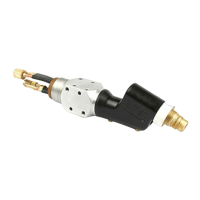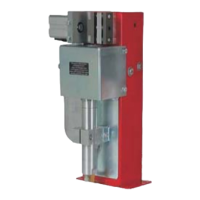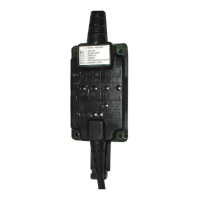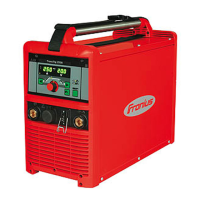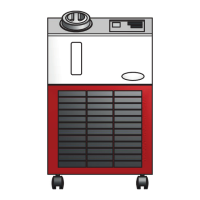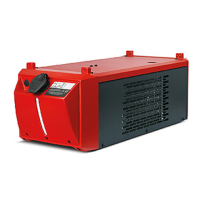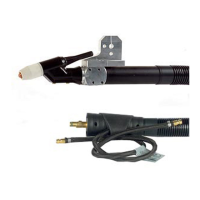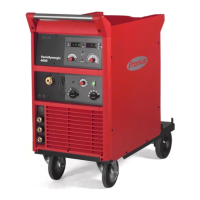14
Loading limits
dependent on the
plasma gas flow
rate
For plasma welding, the values for the plasma gas flow rate and maximum welding
current must lie within the set limits. An upper or lower exceed of these limits can change
the plasma properties, e.g.:
- Low plasma gas flow rate............ „soft“ plasma jet
- High plasma gas flow rate ........... „hard“ plasma jet („plasma cutting“)
Important! Do not exceed the upper or lower limits set for plasma gas values and max.
welding current during operation.
Important! The minimum coolant flow rate is 1 l/min
This table is only valid for the PTW 500 (electrode diameter 1.0 mm; d.c. 60%):
∅∅
∅∅
∅ Plasma nozzle Plasma gas flow rate Max. welding current
0.6 mm min.0.30 l/min 15 A
0.8 mm min.0.30 l/min 20 A
1 mm min.0.30 l/min 28 A
1.2 mm min.0.30 l/min 35 A
1.4 mm min.0.30 l/min 45 A
1.6 mm min.0.30 l/min 50 A
1.8 mm min.0.30 l/min 50 A
This table is only valid for the PTW 1500:
∅∅
∅∅
∅ Plasma nozzle Plasma gas flow rate Max. welding current
1.5 mm min.0.30 l/min 60 A
max.0.80 l/min 100 A
2.0 mm min.0.35 l/min 80 A
max.1.00 l/min 120 A
2.5 mm min.0.45 l/min 110 A
max.1.20 l/min 145 A
3.0 mm min.0.55 l/min 130 A
max.1.30 l/min 150 A
This table is only valid for the PTW 3500 in conjunction with a FK9000 cooling unit:
Loading limits dependent on the plasma gas flow
rate
General Loading limits for plasma welding/plasma brazing depend on the following factors:
- Diameter of the plasma nozzle
- Position of the tungsten electrode
- Plasma gas flow rate
The following loading limits apply to the standard tungsten electrode setting (see also
„Adjusting the tungsten electrode“).

